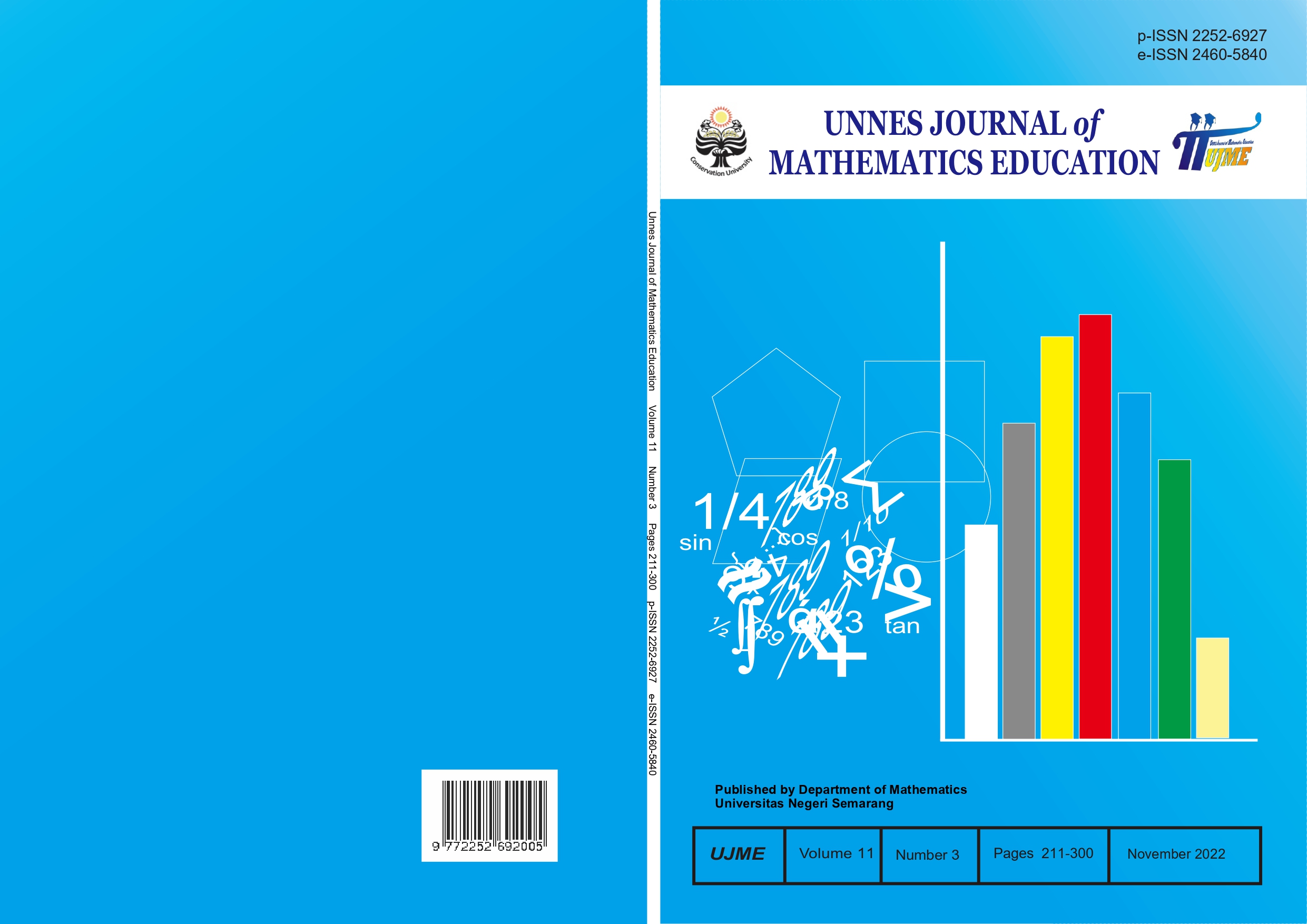Analyzing the Effect of Using the Geoboard for Learning the Pythagorean Theorem
##plugins.themes.academic_pro.article.main##
Abstract
This research considered the need to implement didactic materials during learning the Pythagorean theorem as one of the topics present in mathematics curricula around the world. The objective was to analyze the effect of the use of the geoboard in the learning of the Pythagorean theorem with high school students. The contributions of the theory of figurative concepts and concrete didactic materials were considered. The method used was a case study design by applying a task with concrete material with ten students. Among the main results, the construction of figures on the geoboard was obtained by analyzing the students' mental images. It was also possible to demonstrate visual skills and reasoning development when implementing this material. In conclusion, the effect of use of the geoboard in the study of the Pythagorean theorem allowed the recognition of the difference in the unit of measurement between the legs and the hypotenuse. Also, the development of the skills allowed the students to build the concept of the relationship between the figures built within the square of the hypotenuse with the area of the squares corresponding to the legs.
##plugins.themes.academic_pro.article.details##
References
Ávila, M. (2019). El teorema de Pitágoras en el marco del modelo de Van Hiele: propuesta didáctica para el desarrollo de competencias en razonamiento matemático en estudiantes de noveno grado de la Institución Educativa Anna Vitiello. Zona Próxima, 30, 1-19. http://dx.doi.org/10.14482/zp.30.373
Barrantes, M., Barrantes, M. C., Zamora, V. & Mejía, A. N. (2018). El Teorema de Pitágoras, un problema abierto. Unión, Revista Iberoamericana de Educación Matemática, 54, 92-112. https://union.fespm.es/index.php/UNION/article/view/310
Barrantes, M., Mejía, A., Zapata, M. & Barrantes, M. (2017). El teorema de Pitágoras mediante software de geometría dinámica. Campo Abierto, 36(2), 151-166. https://doi.org/10.17398/0213-9529.36.2.151
Chamorro, M. C. (2005). Didáctica de las Matemáticas. Pearson Educación.
Cohen, L. & Manion, L. (2002). Métodos de investigación educativa. La muralla.
Conde-Carmona, R. & Fontalvo-Meléndez, A. (2019). Didáctica del teorema de Pitágoras mediada por las TIC: el caso de una clase de Matemáticas. Trilogía Ciencia Tecnología Sociedad, 11(21), 255-281. https://doi.org/10.22430/21457778.1187
Fischbein, E. (1993). The Theory of Figural Concepts. Educational Studies in Mathematics, 24(2), 139-162. http://www.jstor.org/stable/3482943
Galeano, M. (2012). Estrategias de investigación social cualitativa. La Carreta Editores. https://biblioteca.colson.edu.mx/e-docs/RED/Estrategias_de_investigacion_social_cualitativa.pdf
Gómez-Sánchez, H., Vergel-Ortega, M. & Rojas-Suárez, J. (2020). Estrategia metodológica para la enseñanza del Teorema de Pitágoras en el grado octavo de la Institución Monseñor Jaime Prieto Amaya. Eco Matemático, 11(1), 63-72. https://doi.org/10.22463/17948231.2948
Hernández-Sampieri, R. & Mendoza, C. (2018). Metodología de la investigación. McGraw-Hill Interamericana Editores.
Iglesias, L. (2017). Demostraciones del Teorema de Pitágoras con goma EVA. STEAM en el aula de Matemáticas. Épsilon, Revista de Educación Matemática, 97, 57-64. https://thales.cica.es/epsilon/sites/thales.cica.es.epsilon/files/epsilon97_4.pdf
Mora, J. (1995). Los recursos didácticos en el aprendizaje de la Geometría. UNO Revista de didáctica de las matemáticas, 3, 101-115. https://www.grao.com/es/producto/los-recursos-didacticos-en-el-aprendizaje-de-la-geometria
Moreno, N., Alvarado, M., Angulo, R. & Briceño, E. (2020). Una aproximación al estudio del teorema de Pitágoras con estudiantes de secundaria. Revista Latinoamericana de Etnomatemática, 13(2), 5-24. https://doi.org/10.22267/relatem.19124.58
Salas, A. (2001). Implicaciones educativas de la teoría sociocultural de Vigotsky. Revista Educación, 25(2), 59-65.
Swan, P. & Marshall, L. (2010). Revisiting mathematics manipulative materials. Australian Primary Mathematics Classroom, 15(2), 13-19.
Teófilo de Sousa, R., Vieira, F. & Araújo-Souza, M. (2022). La Teoría de los Conceptos Figurativos y GeoGebra: el concepto y la visualización en geometría dinámica. Matemáticas, Educación y Sociedad, 5(1), 1-17. https://www.uco.es/ucopress/ojs/index.php/mes/article/view/13532
Troyano, J. & Flores, P. (2016). Percepción de los alumnos acerca del teorema de Pitágoras. Épsilon, Revista de Educación Matemática, 33(3), 51-60. https://thales.cica.es/epsilon/sites/thales.cica.es.epsilon/files/epsilon94_5_0.pdf
Vargas, G. & Gamboa, R. (2013). La enseñanza del teorema de Pitágoras: una experiencia en el aula con el uso del GeoGebra, según el modelo de van hiele. UNICIENCIA, 27(1), 95-118. https://www.revistas.una.ac.cr/index.php/uniciencia/article/view/4945
Villarroel, S. & Sgreccia, N. (2011). Materiales didácticos concretos en Geometría en primer año de Secundaria. Números, Revista de Didáctica de las Matemáticas, 78, 73-94. https://drive.google.com/file/d/1uJyA_dZAlpkrnbrcf3M8jn4PnILtKcFX/view
Wares, A. (2017). Looking for Pythagoras between the folds. International Journal of Mathematical Education in Science and Technology, 48(6), 938-941. 10.1080/0020739X.2017.1286526
Wares, A. (2019). Paper folding and trigonometric ratios. International Journal of Mathematical Education in Science and Technology, 50(4), 636-641. 10.1080/0020739X.2018.1500655
